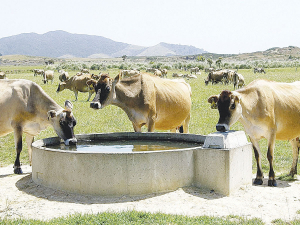Ensuring your cows have the best mating this season
Hit the ground running this mating with these foundations for success.
 Animal health and welfare is a top priority as the dairy sector experiences dwindling magnesium supply.
Animal health and welfare is a top priority as the dairy sector experiences dwindling magnesium supply.
Dairy farmers are facing a tight supply of magnesium due to Covid-19 related shipping delays.
DairyNZ general manager farm performance Sharon Morrell says shipping woes have caused disruption for some magnesium supply into New Zealand.
Retailers of magnesium, DairyNZ, NZ Veterinary Association and Ministry for Primary Industries (MPI) have met to better understand the extent of the disruption.
Morrell says they are working together to ensure animal health and welfare needs can be addressed.
<p."Supplies of magnesium are tight across all suppliers across the country but there is a plan in place to manage critical animal health needs," she says. "A number of shipments are due this month, and we anticipate this will ease the supply situation."
Animal health and welfare is a top priority for everyone in this sector and farmers are being urged to continue talking to their retailers about theier specific needs.
Morrell is also urging farmers to manage their magnesium stocks well.
"Share any excess with others, talk to retailers about specific needs and check with your vet or farm consultant before implementing major changes to your normal plan, or if there are animal health issues on farm that are different to a usual season.
Tips to Manage Use
Pre-Calving
Post calving/p>
Legal controls on the movement of fruits and vegetables are now in place in Auckland’s Mt Roskill suburb, says Biosecurity New Zealand Commissioner North Mike Inglis.
Arable growers worried that some weeds in their crops may have developed herbicide resistance can now get the suspected plants tested for free.
Fruit growers and exporters are worried following the discovery of a male Queensland fruit fly in Auckland this week.
Dairy prices have jumped in the overnight Global Dairy Trade (GDT) auction, breaking a five-month negative streak.
Alliance Group chief executive Willie Wiese is leaving the company after three years in the role.
A booklet produced in 2025 by the Rotoiti 15 trust, Department of Conservation and Scion – now part of the Bioeconomy Science Institute – aims to help people identify insect pests and diseases.
President Donald Trump’s decision to impose tariffs on imports into the US is doing good things for global trade, according…
Seen a giant cheese roll rolling along Southland’s roads?